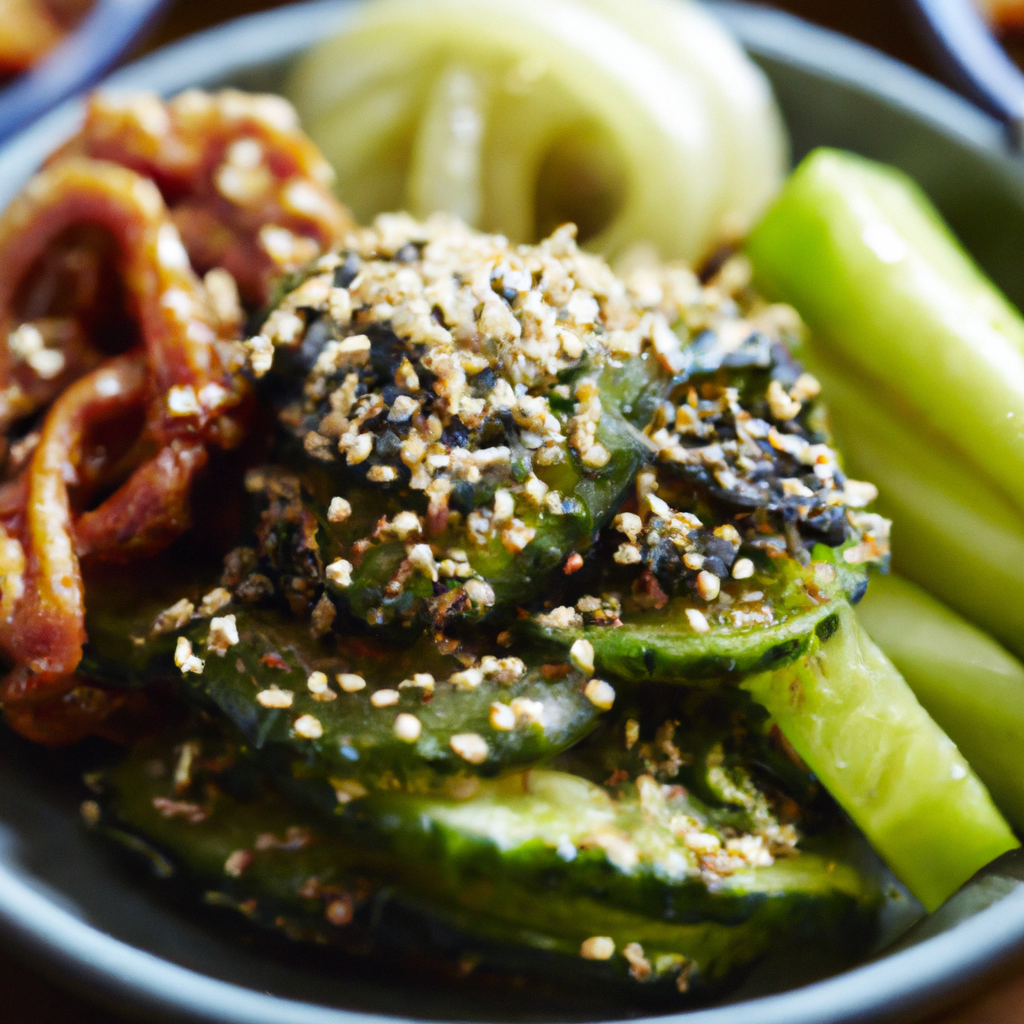Banchan

Banchan: The Art of Korean Side Dishes
Korean cuisine is celebrated for its bold flavors, vibrant colors, and unique dishes. Central to any Korean meal is banchan, an assortment of small, flavorful side dishes that accompany the main course. Banchan, which translates to “side dish” in English, is known for its diversity and variety, ranging from pickled vegetables to meat dishes and everything in between. In this blog post, we will explore the fascinating world of banchan and its significance in Korean culinary culture.
Banchan is not just an accompaniment to the main dish; it is an integral part of the Korean dining experience. It adds depth, balance, and complexity to a meal, ensuring that every bite is a delightful adventure. The sheer variety of banchan is astounding. A typical Korean meal can consist of anywhere between five to twelve banchan dishes, with some restaurants serving more than twenty.
The most common banchan items include kimchi, namul (seasoned vegetables), pickles, and jeon (pan-fried dishes). Kimchi, perhaps the most iconic Korean dish, is a fermented cabbage or radish dish seasoned with chili powder, garlic, and other spices. It is said that a Korean meal without kimchi is incomplete. Each region in Korea has its own unique variation of kimchi, resulting in a wide array of flavors and textures. From spicy to mild, crunchy to soft, kimchi is a versatile banchan that never fails to impress.
Namul, on the other hand, refers to a variety of seasoned and side vegetables. Ranging from spinach to bean sprouts and fernbrake, namul is typically blanched or lightly sautéed and seasoned with soy sauce, sesame oil, garlic, and salt. The result is a refreshing and flavorful dish that complements the main course perfectly. Pickled vegetables, called jangajji, also find their place on the banchan table. These pickles are made by soaking vegetables such as radish, cucumber, or garlic in a brine or vinegar solution, resulting in a tangy and slightly sour flavor that stimulates the palate.
Jeon, another popular banchan category, includes various pan-fried dishes such as vegetable pancakes, seafood pancakes, and meat dumplings. Jeon offers a delightful contrast of crunchy exterior and tender filling, making them a favorite among both Koreans and foreigners alike. Apart from these basic categories, banchan can also include marinated meats, stews, noodles, and even fruit.
The significance of banchan goes beyond the culinary realm. It plays a crucial role in Korean culture and hospitality. Sharing banchan with others at the table reflects the communal nature of Korean dining. It is common to order additional servings of banchan during a meal, ensuring that everyone can enjoy an abundant feast. Moreover, the presence of an assortment of banchan has cultural and historical significance. In the past, Koreans relied on various banchan dishes to improve the nutritional value of meals when food was scarce. The practice of serving multiple banchan dishes has carried on, symbolizing generosity, abundance, and the desire to please guests.
In conclusion, banchan is an essential component of Korean cuisine, representing the art of side dishes. The wide variety of flavors, textures, and ingredients found in banchan make each meal a unique and exciting experience. Whether it is the pungent spiciness of kimchi, the refreshing crunch of namul, or the savory delight of jeon, banchan captivates the taste buds and leaves a lasting impression. So, the next time you indulge in Korean cuisine, do not forget to appreciate the diverse world of banchan that accompanies your meal.